CAMP Rehoboth Community Center
A longstanding LGBTQ+ community center in Sussex County.
1991-Present,
37 Baltimore Avenue, Rehoboth Beach, DE

Since 1991, CAMP Rehoboth has served the region by bridging the gap between the LGBTQ+ and straight communities.
CAMP, which stands for Creating A More Positive (Rehoboth), offers health programs, social opportunities, artistic enrichment, and annual events like SUNDANCE (now SUNFESTIVAL) and Women’s Fest. Additionally, CAMP Rehoboth has published a free, monthly newsletter, Letters from CAMP Rehoboth, since its founding in 1991.
Rehoboth Beach first became known as “The Nation’s Summer Capital” during the 1950s and 1960s when vacationers from the tri-state area traveled to summer in the city. The opening of the Chesapeake Bay Bridge in 1952 made it even easier for folks to take a day or weekend trip to the beach. By the 1970s and 1980s, Rehoboth saw an influx of queer visitors, residents, and businesses. With the rise in queer visibility came a backlash from local residents that included attempts to limit the number of gay bars and restaurants as well as verbal and physical assaults. And, in 1988, a bumper sticker began appearing around town reading, “Keep Rehoboth a Family Town,” which was a reference to the locals viewing queer people as “outsiders” and a threat to their way of life. To foster understanding between the queer and straight communities in town, CAMP Rehoboth was born.
The founders of the CAMP Rehoboth Community Center, partners Murray Archibald (b. 1954) and Steve Elkins (1951-2018), were determined to show the community that families come in all shapes, sizes, and orientations. The organization was founded in 1991 with the goal of creating a more positive and inclusive community environment in Rehoboth Beach.
In a 2023 oral history interview with the Delaware Division of Historical and Cultural Affairs, Archibald said of CAMP’s original mission:
We both believed that if we’re able to live side by side, neighbor to neighbor, that’s how you change people’s hearts and minds. When they see you just trying to live, trying to make the community the best it can be. Everybody’s sort of working together. That, and, the name ‘room for all,’ the meaning of Rehoboth, and the idea that we were building a safe place for everyone, was really crucial to that vision.
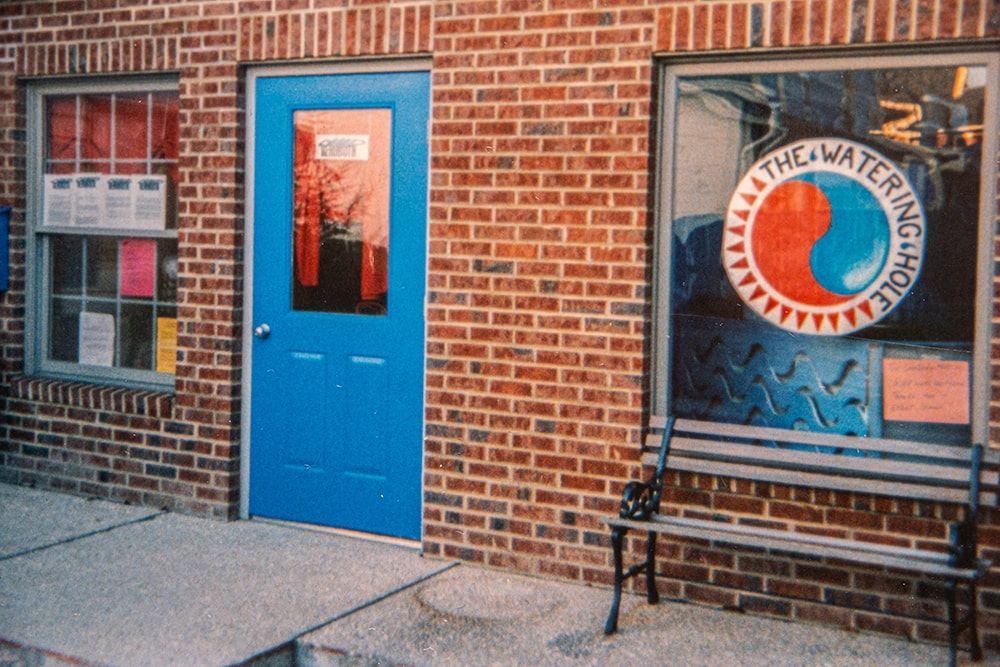

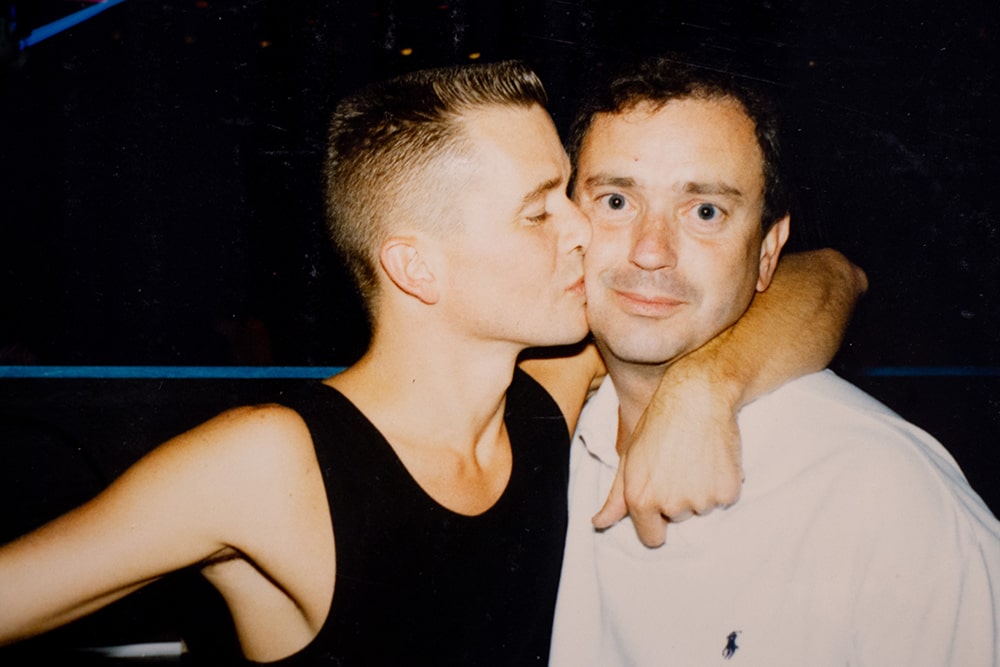
Archibald originally met Elkins at the White House in 1978 and they instantly connected. The couple, who previously lived in Washington D.C. and then New York City in the mid-1980s, began vacationing in Rehoboth in the summer of 1981. By the end of the 1980s, they wanted to become permanent residents. In 1990, Archibald and Elkins rented a property at 39 Baltimore Avenue with the dream of creating a full-service community center. With the help of a group of volunteers, they raised enough money to open a small office on the first floor of their property. They also installed a painted rainbow fence, under the direction of Archibald, an artist himself, who believed the fence would be welcoming. They purchased the property in 2002.
With the opening of the CAMP office, they started publishing a free newsletter, Letters from CAMP Rehoboth, which contained community news, event listings, resources, and made the Rehoboth queer community more visible. The first newsletter was only four pages long and its advertisements provided much of the funding for CAMP’s operations. In the beginning, Letters was published every two weeks only in the summer. Jim Bahr, one of the original volunteers, served as executive director and editor of Letters for its first two seasons. Letters, like the newsletters of many other queer organizations, was crucial to CAMP’s success by connecting the queer community before the age of cell phones and social media.
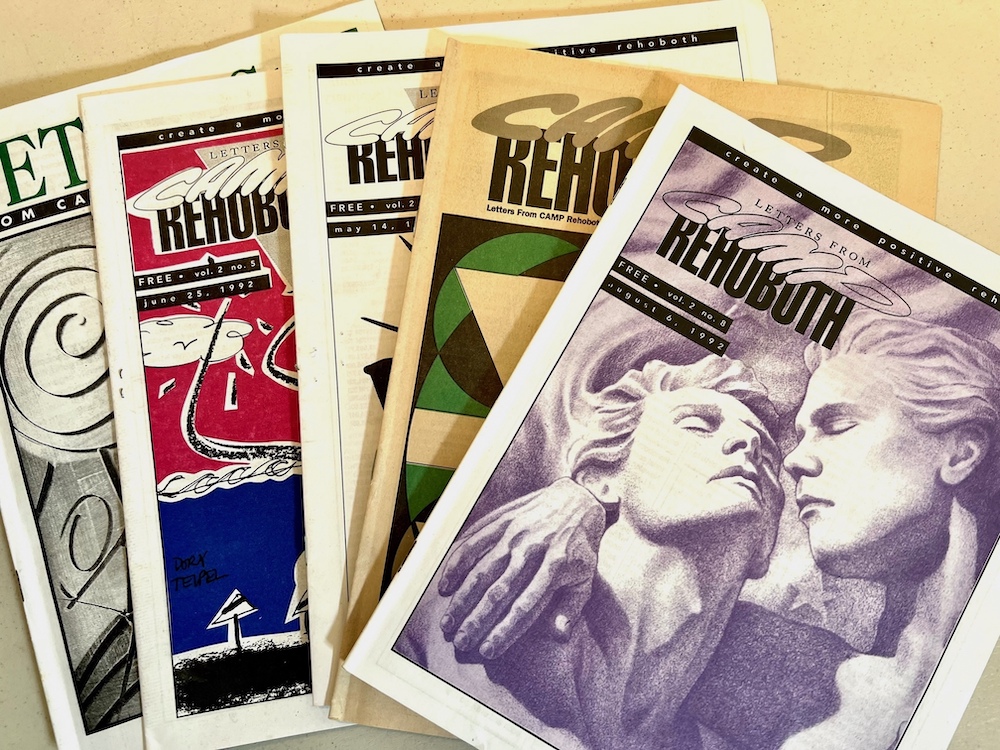
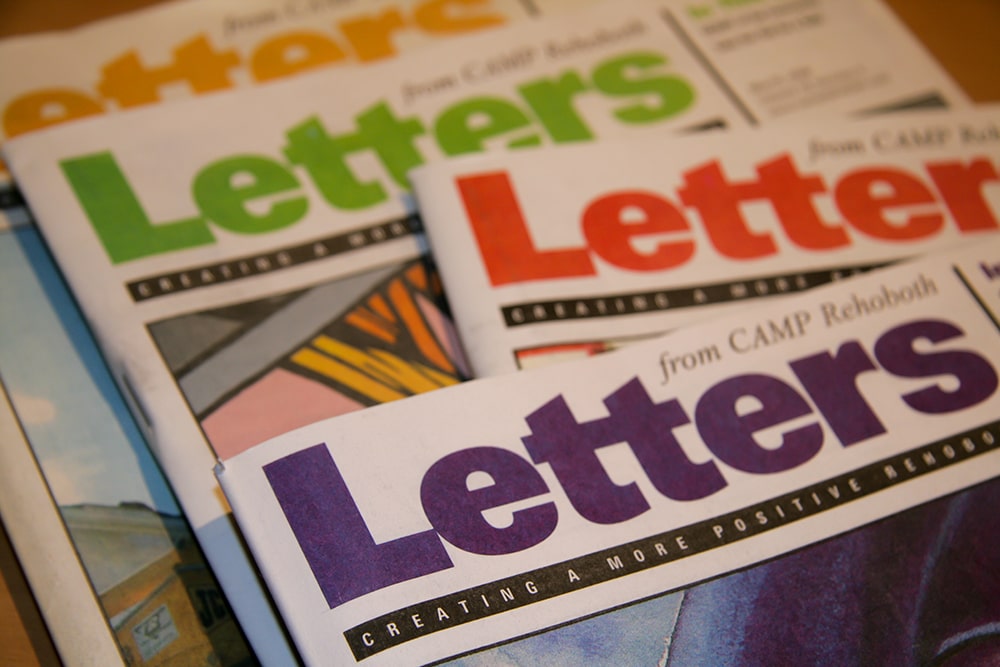
When Bahr moved to Australia, Archibald stepped in as a volunteer to lead the organization until 1993 when Elkins was appointed as CAMP’s executive director, a position he held for over twenty-five years until his death in 2018. Archibald served as president of CAMP’s Board of Directors for many years while also acting as creative director for CAMP and Letters. While Elkins worked with staff and volunteers, Archibald focused on photography and graphic design for the newsletter and aided in fundraising efforts. Archibald recalled that he and Elkins were doing the work of multiple people at one time but said during the 2023 oral history interview, “We were passionate about it. And that makes all the difference in the world.”
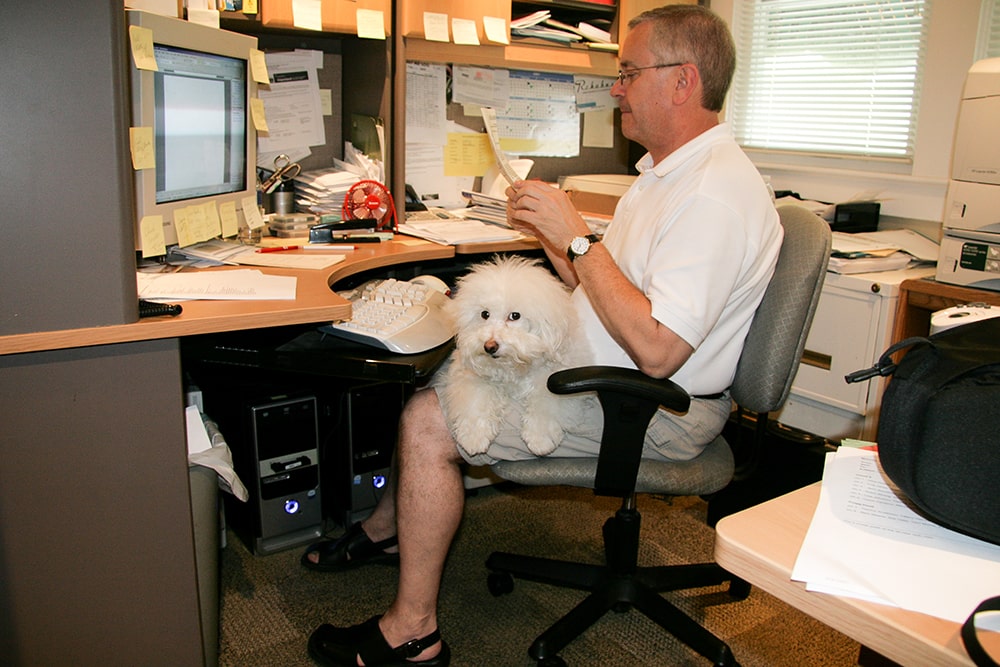
The logo for CAMP Rehoboth, which depicts a red heart inside of the outline of a home, representing the vision of CAMP being the “heart” of the community, was designed by Archibald.

The name CAMP Rehoboth is a reference to the Methodist Church camps that established the City of Rehoboth Beach in the 1870s. Rehoboth, which means “room for all,” was a destination for closeted queer people as early as the 1930s, when Louisa Carpenter, a descendant of the famous du Ponts who is often cited as the woman who first introduced a queer sensibility to Rehoboth, would use her family’s beach house to throw parties for queer and closeted people starting in the 1930s.
In a 2010 oral history interview with the Rehoboth Beach Museum, Elkins elaborated on the decision to name the organization CAMP Rehoboth:
So we started CAMP for a lot of reasons: the ‘create a more positive’ part, the fact that Rehoboth was a church camp to begin with, and the sort of historical sense of camp in the gay and lesbian community of being campy, being fun, being it something that you do. And most of us grew up going to the beach or going to somewhere in the summer as a camp, so it all just rolled into one.
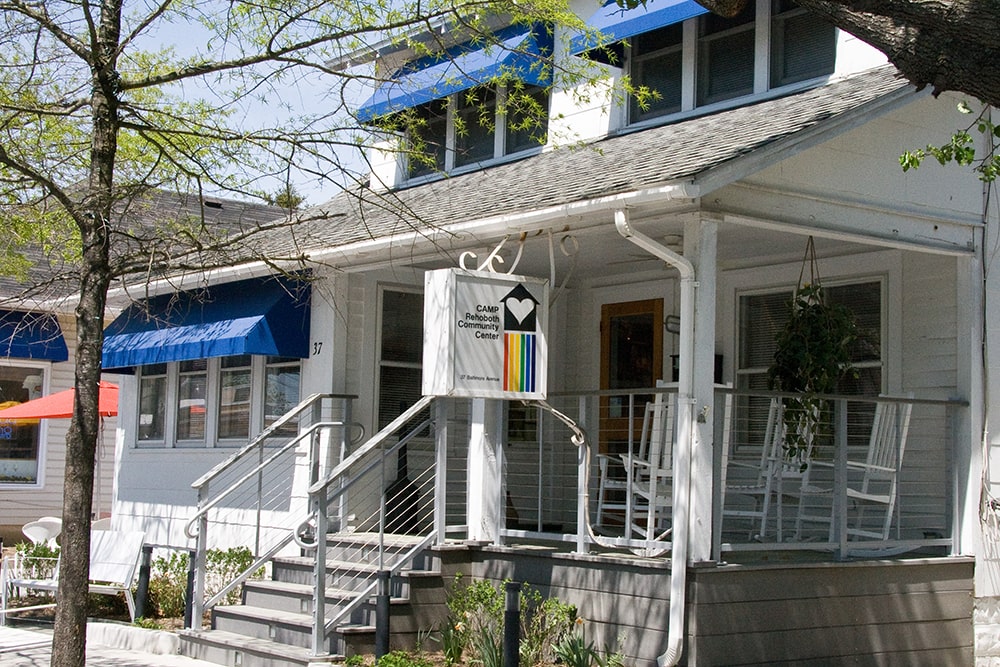
Since its founding, CAMP has carried on its mission of offering community space, promoting human and civil rights, and working to combat prejudice and discrimination through education and sensitivity training. In the mid- to late-1990s, CAMP worked with local law enforcement and government officials to address the violence and harassment queer people were facing by providing such training. Elkins recalled in a 1997 interview for Letters, “The first year we did the police sensitivity training, it was very tense… Many of the young officers had awful stereotypes of gay people.
I had to take a deep breath and prepare myself to walk into the room.” Leaders of CAMP advised the police on how to sensitively handle victims of hate crimes and verbal abuse. By 1997, sexual orientation was added to Delaware’s hate crimes legislation, thanks in large part to CAMP’s efforts to educate people on incidents of gay bashing and homophobia.

In the summer of 1993, CAMP Rehoboth first published its “Beach Book,” which listed the addresses, names, and telephone numbers of the owners and frequent guests of gay beach houses. At a time before cell phones and social media, these mini-directories created a way for queer people in Rehoboth to connect. It also raised awareness for how many queer people were residents and visitors to the beach area, as well as where people could find queer-friendly businesses. Today, you can still find copies of selected issues of Beach Books in the Rehoboth Beach Museum’s permanent collection.
In 2005, Archibald and Elkins purchased the adjacent property at 37 Baltimore Avenue and by 2009, CAMP had expanded to become a full-service community center with a large meeting space for events. In 2009, the Delaware Legislature also passed Senate Bill 121 prohibiting discrimination based on sexual orientation, and the newly opened CAMP Rehoboth Community Center hosted Governor Jack Markell for the signing of the non-discrimination bill. Elected officials continue to regularly visit the community center.
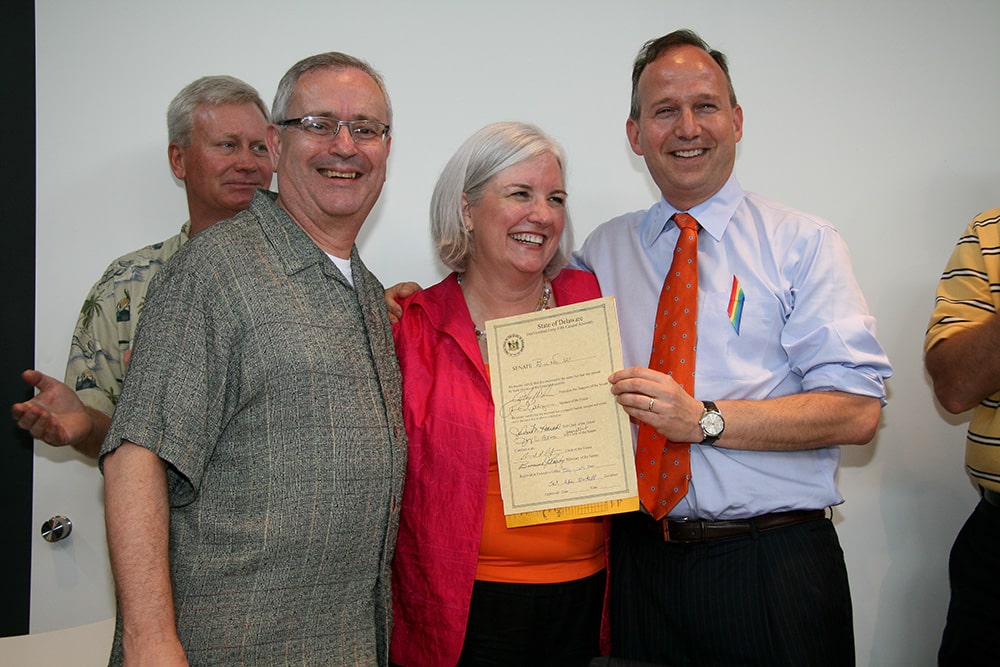
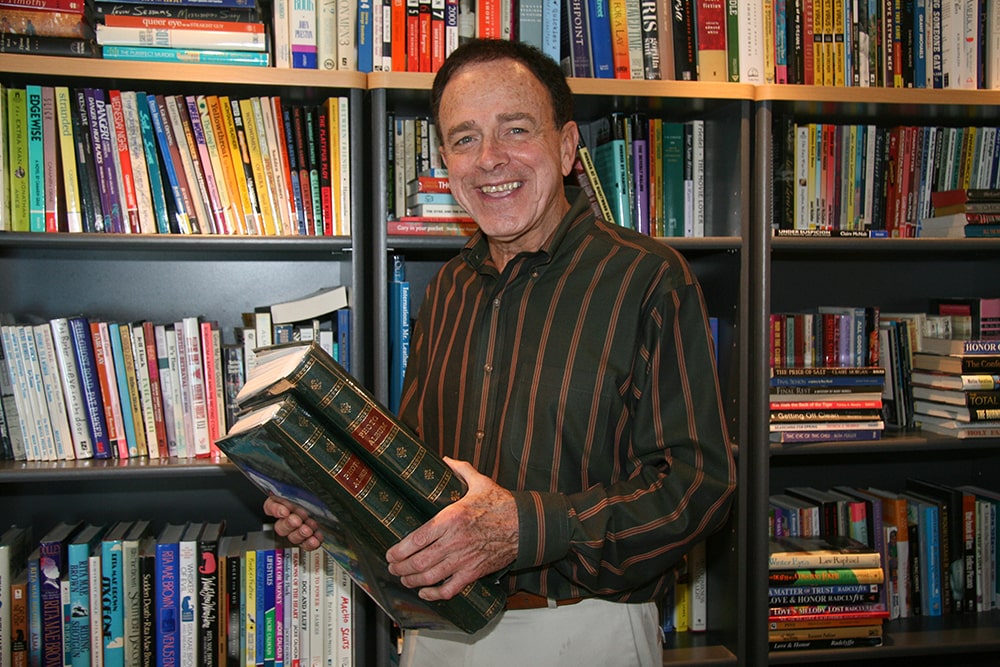
By then, public opinions were finally starting to change, as Elkins noted in the 2010 oral history interview with the Rehoboth Beach Museum: “Rehoboth was an island of tolerance in a sea of homophobia. And now we’re an island of tolerance in a sea of outlet malls.”
Now CAMP Rehoboth offers health services, arts and cultural programs, community building groups, and more. CAMP also stewards an LGBTQ+ library that is open during regular business hours to anyone interested in borrowing its resources, which include donated books and DVDs, as well as the photograph collection of Tony Burns, CAMP’s photographer for Letters.
Some annual events in CAMP’s history include SUNDANCE, the LOVE weekend for Fourth of July, the Follies talent show, and Women’s FEST. While the LOVE weekend and the Follies are no longer part of CAMP’s programming, SUNDANCE, now called SUNFESTIVAL, and Women’s FEST still occur annually as of 2023.

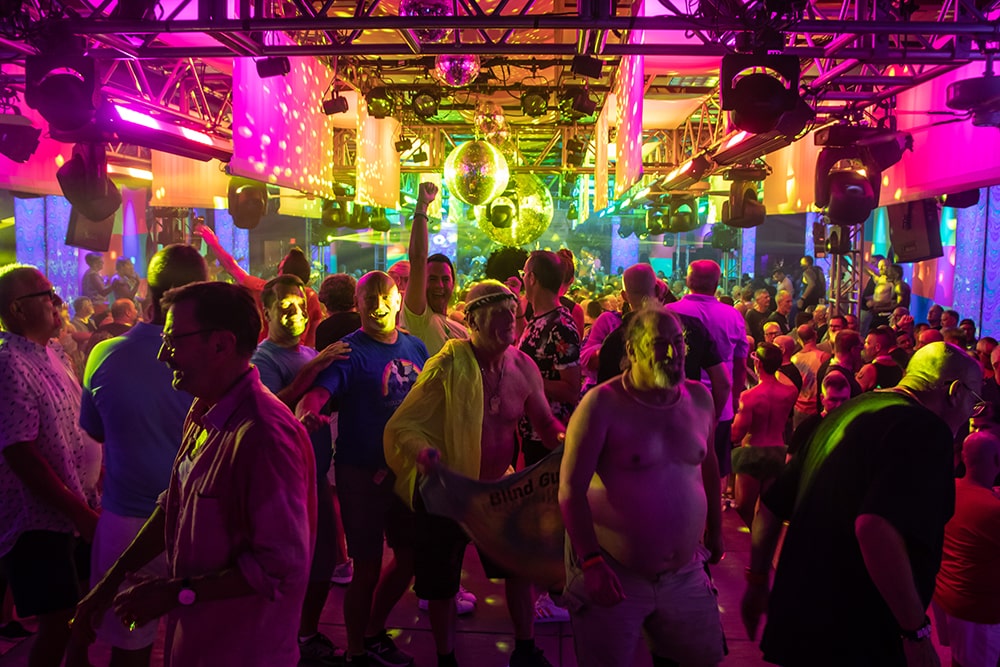
The SUNDANCE festival, which launched in 1988 as a way to celebrate Archibald and Elkins’ ten-year anniversary and fundraise for HIV/AIDS, was originally a large dance event with a silent auction. After CAMP was formed, SUNDANCE became a fundraiser for the organization and other nonprofits. Women’s FEST began as a half-day women’s conference in 2001 and has since grown to a four-day event each April that draws women from across Delaware and the East Coast to enjoy well-known guest speakers, sports, entertainment, and a dance party.
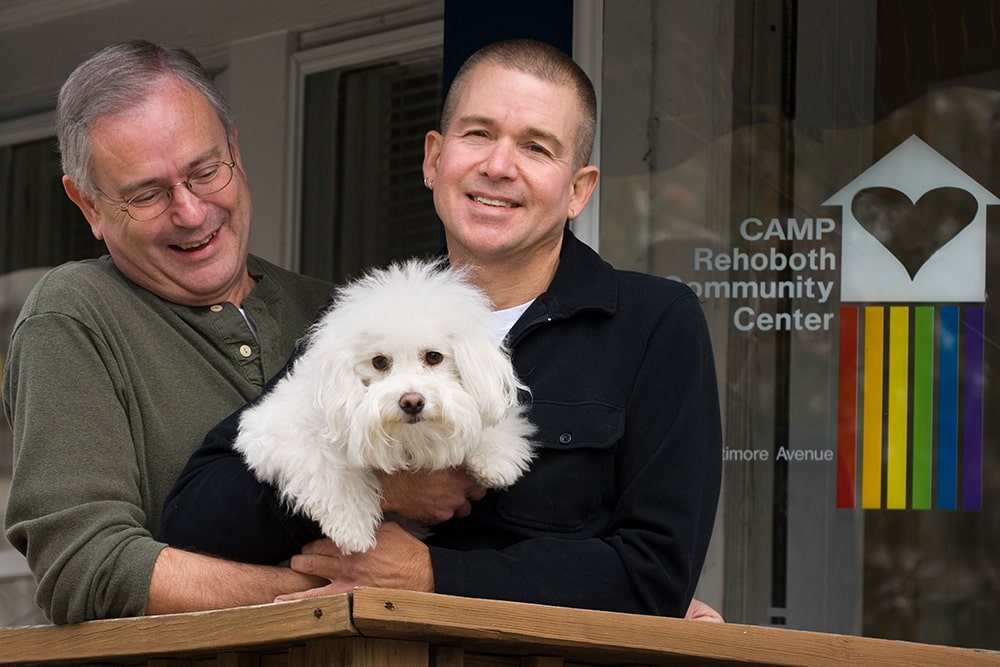
In 2018, Elkins passed away after a year-long battle with Lymphoma. To honor his activism and impact on the community, the City of Rehoboth Beach renamed a walkway that connects Baltimore Avenue with Second Street—physically connecting gay businesses to city administration buildings—to “Steve Eklins Way.” In 2021, CAMP Rehoboth dedicated its multi-purpose community space to the organization’s founders, naming it the Elkins-Archibald Atrium.
Letters is now published monthly, with upwards of 100 pages in each issue, many of which still feature Archibald’s creative handiwork on the cover. CAMP remains the heart of the Rehoboth community today.
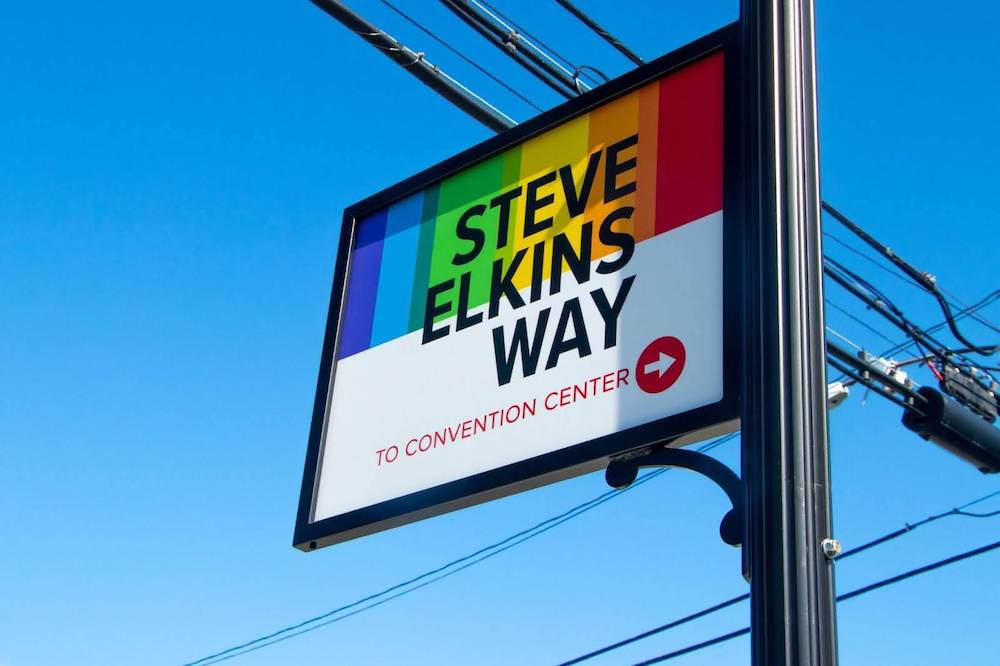
Photo Courtesy: Murray Archibald, and Carolanne Deal.
Sources:
- CAMP Programs
- CAMP Rehoboth History
- Chibbaro Jr., Lou, “Happy 25th, CAMP Rehoboth,” Washington Blade, October 9, 2015
- Conversations on History: 30 years of CAMP Rehoboth in Photographs, Rehoboth Beach Museum
- Jacobs, Fay, “A CAMP Story,” Letters to CAMP Rehoboth, October 17, 1997
- Jacobs, Fay, “The Gaying of Rehoboth Beach: Good for all in a town with room for all,” Delaware Beach Life, October 2008
- Murray Archibald oral history interview with the Delaware Division of Historical and Cultural Affairs, February 8, 2023
- Murray Archibald and Steve Elkins oral history interview with Rehoboth Beach Museum, 2010
Explore Other Places
-

The Renegade
4274 Coastal Highway, Rehoboth Beach, DE
A once popular gay bar, restaurant, and resort at the Delaware beaches.
-
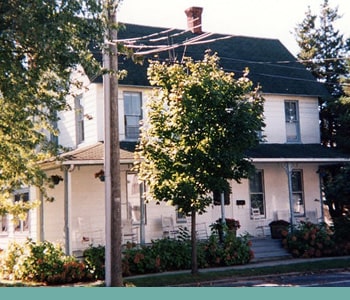
Rehoboth Guest House
40 Maryland Avenue, Rehoboth Beach, DE
A historically queer-friendly guest house that still welcomes visitors today.
-
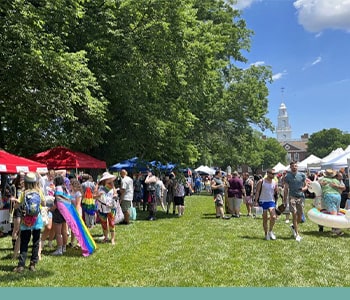
Legislative Hall and Legislative Mall
411 Legislative Avenue, Dover, DE
The site of Delaware’s state capital building and the outdoor location of large, annual LGBTQ+ festivals.
-
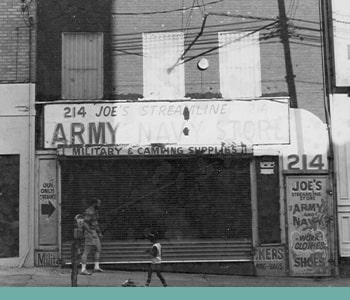
Griffin Community Center
214 N. Market Street, Wilmington, DE
A Former LGBTQ+ community center in northern Delaware that offered a wide variety of services and support during a time of need.
-
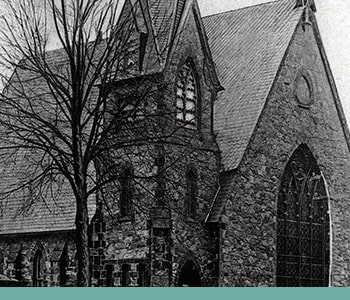
Daugherty Hall at the University of Delaware
17 W. Main Street, Newark, DE
A gathering place for all and where the University of Delaware’s Gay Student Union hosted its weekly coffeehouses.


